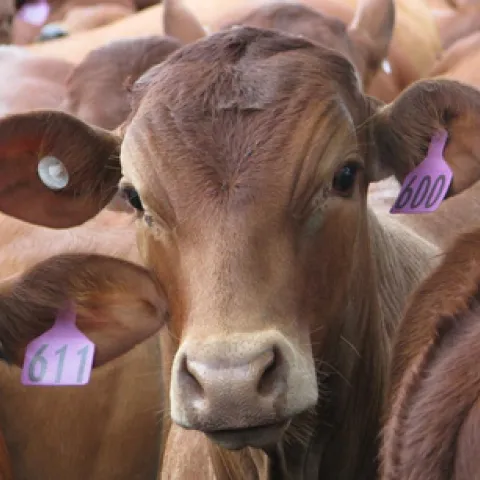Accurate identification is an essential first step to individual animal management on any cattle operation. The ability to identify individual animals helps you understand individual performance and target your management practices for health and nutrition. Managing your herd at an individual level also helps you better understand profitability and return on investment.
Understanding Cattle Tags
Ear tags are an easy and cost-effective option for individual cattle identification. Tags can be applied at birth and can help track the animal throughout its lifetime. By having unique identifiers, you can record data and make better-informed decisions on animal management. Reliable record-keeping also ensures your operation remains compliant with regional regulations.
Accurate records can also result in better herd health by giving you a clear picture of how your herd is responding to current health protocols and management practices.
Types of Cattle Tags
Whether you use visual or electronic identification, you need a solution you can count on. Visual tags are ideal in pasture operations where you need to read an animal’s ID from a distance. The tags should be large and made of material that holds up in your environment. The print should be dark and legible from a distance. If you are writing your own tags, use a marker that will last in your region and apply two coats for readability.
Electronic tags should be durable and should produce consistent, reliable reads. There are two general types of electronic tags: ultra-high frequency and low frequency. Ultra-high frequency (UHF) tags are ideal for inventory purposes. These tags can be read at further distances, making them ideal to be stationed in alleyways to track pen movement. The long-distance reads make it more challenging to separate identifiers though, so most individual management tags are low-frequency. Low-frequency (LF) tags are ideal for tracking any activity at an individual level, such as animal health, nutrition information, weight, or reproductive status. LF tags are available in full duplex or half duplex, depending on your operation’s requirements and regional regulations.
Regulatory Requirements
Countries often regulate the identification of cattle to track animal movements for health purposes. Most regulatory agencies require cattle to be identified by an electronic tag and require an update of animal movement within 24 hours. Certain export markets and value-added programs, such as breed or carcass quality programs, have requirements of their own to regulate membership and trade. Before investing in an identification solution for your operation, ensure you understand your regional requirements and are choosing a solution that keeps you within compliance.
Integrating Datamars Livestock Products
Datamars Livestock has a long history in the world of identification. Our solutions began in textile identification and have been proven for over 50 years.
Z Tags offers a range of visual and electronic identification solutions. We manufacture tags of various sizes and materials to fit our farmers’ needs across the world. We also manufacture precision application tools designed specifically for our tags. Accurate, reliable ID is the first step in any successful livestock operation, so we take engineering these solutions seriously.
Our tags are also designed to work seamlessly with the rest of our livestock management portfolio, including scales, EID readers, and automated solutions. Our Datamars Livestock software underpins our product offering, bringing all your tools online in one easy-to-use platform.
Every successful cattle operation starts with a solid identification program as its foundation. Precision livestock management hinges on your ability to understand animal performance at an individual level. Get started today with accurate and reliable tools from Datamars Livestock.
